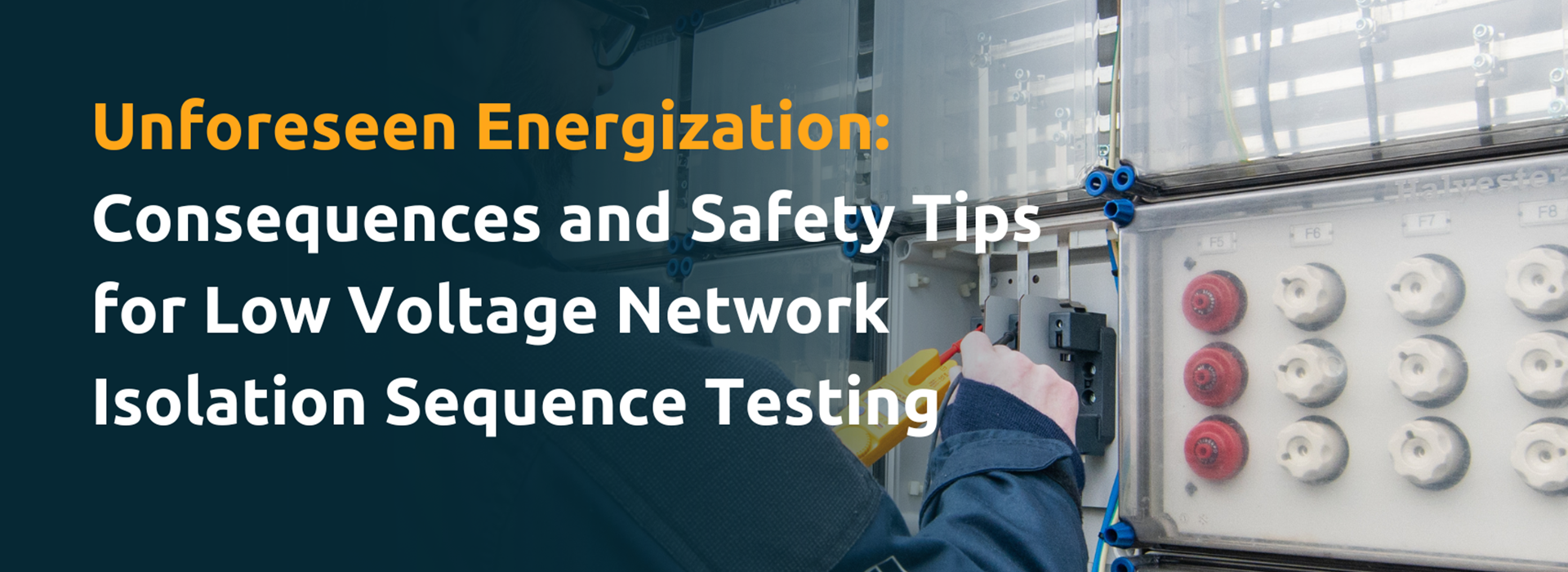Ok
What could go wrong?
Scenario 1: Misinterpretation of Isolation Instructions
Unclear, incomplete, or misinterpreted isolation instructions or diagrams can lead to confusion during the isolation process. This may result in workers unintentionally skipping a crucial step or failing to isolate a specific section of the network, leaving parts of it energized.
Scenario 2: Equipment Malfunction
Isolation devices such as switches, circuit breakers, or isolators can fail due to mechanical issues, electrical faults, or age-related deterioration. Particles of dust, dirt, vermin and water ingress are also potential reasons for equipment malfunction. As a result, failure to operate these devices correctly can result in unintended energization.
Scenario 3: Inadequate Testing & Verification
Insufficient or improper testing procedures, or incorrect labelling can result in incorrect determination of the energization status. In consequence, relying solely on visual inspections or inadequate testing equipment may lead to workers making false assumptions.
Scenario 4: Lack of Communication & Coordination
Poor communication between teams and individuals involved in the isolation process can contribute to errors. In particular, misunderstandings, incomplete information transfer, or a lack of coordination can result in incomplete isolation or failure to communicate changes.
Scenario 5: Assumptions & Complacency
Making assumptions about the status of the low voltage network or becoming complacent about safety procedures can be dangerous. In particular, assuming that isolation has been successful without proper verification or disregarding safety protocols due to overconfidence can result in an energized network and potential accidents.
Mitigating potential incidents
To minimize the risks associated with electrical network maintenance and isolation, a holistic safety approach is imperative. Providing comprehensive guidelines, which detail each step of the isolation process, from equipment shutdown to disconnection and lockout/tagout procedures, is essential to ensure that workers follow a systematic and clear approach. In addition, establishing preventive maintenance programs and maintaining a stock of spare equipment can significantly reduce the risk of equipment failures during isolation. To confirm the de-energized state of the network, rigorous testing using reliable tools and equipment becomes a critical step. Furthermore, promoting effective communication through regular coordination meetings like Last-Minute Risk Assessments and Toolbox Talks fosters team cohesion, minimizing the chances of misunderstandings and errors. These proactive measures collectively contribute to a safer work environment and help prevent incidents related to electrical network maintenance.
How RelyOn Nutec can help
In collaboration with our partner Thomson Bridge, we are uniquely positioned to address the safety and training needs in the realm of voltage safety. Our portfolio of high and low voltage training and consultancy services helps equip professionals with the knowledge and skills needed to mitigate the risks associated with electrical systems. Through innovative learning solutions and advanced training methods that use AI-powered adaptive learning technology, we help individuals and organizations stay updated with the latest safety practices. Furthermore, an emphasis on contextualization ensures that the training aligns with local regulations and industry-specific requirements.
To further support organizations operating in safety-critical sectors, we provide two different solutions that are customized to accommodate a variety of organizational needs. Our Business Portal serves as a centralized hub for training management, providing easy access to our comprehensive training catalog, streamlining booking processes, and offering essential features for efficient training administration. On the other hand, RIDER focuses on compliance and competence management, offering a precise system for tracking qualifications, anticipating compliance gaps, and efficiently monitoring workforce competence. Rider seamlessly integrates into existing systems and offers a comprehensive platform for assessment and evidence storage.
Furthermore, our comprehensive control of work system, WorkSafe, supports organizations in the management and reduction of workplace risks through the digitization of control of work systems. WorkSafe offers a suite of tools and assets to empower businesses in creating a secure and efficient workplace while ensuring the well-being of their workforce across various industries. This integrated system encompasses multiple facets of safety management, including risk assessment, hazard identification, control of work, and emergency response planning. By implementing WorkSafe, companies can proactively cultivate a safer work environment, minimize the likelihood of accidents, and elevate their overall safety performance.
____
Check out our full suite of blended low voltage courses here.
Next read
-

-

-
 Article 14. June 2024
Article 14. June 2024 -

Ensuring Safety and Efficiency: IRATA Rope Access Training for a Safer Work Environment
In industries such as oil & gas and renewables, where accessing challenging locations is common, rope access methods provide a safe and efficient solution. These methods offer technicians a secure means of navigating heights and restricted areas while minimizing environmental impact. However, proficiency in rope access requires proper training and a globally accepted safety education.
Article 4. June 2024 -

Polaris Sells RelyOn Nutec to Mubadala Capital
The acquisition, part of Mubadala Capital’s flagship Private Equity Fund IV, strengthens the asset manager’s footprint in the business services sector.
Article 24. May 2024 -

RelyOn Nutec Acquires Electrical Training and Consultancy Specialist Quercus Technical Services, Fast-tracking European Electrical Capability Build
Effective May 21st, RelyOn Nutec has acquired Quercus Technical Services BV, one of the largest specialist electrical safety and skills training organizations in the Netherlands. The acquisition of Quercus bolsters RelyOn Nutec’s position in the electrical training market and accelerates its European roll out.
Article 22. May 2024 -

-
 Article 2. May 2024
Article 2. May 2024
